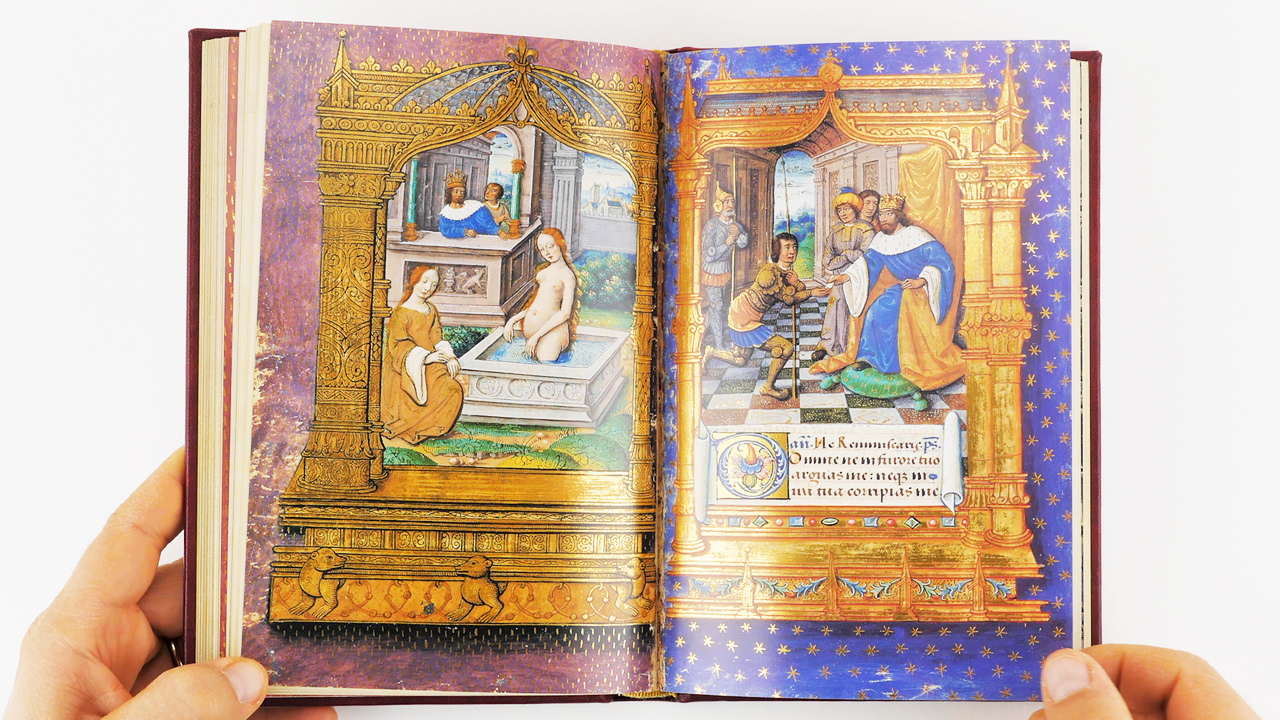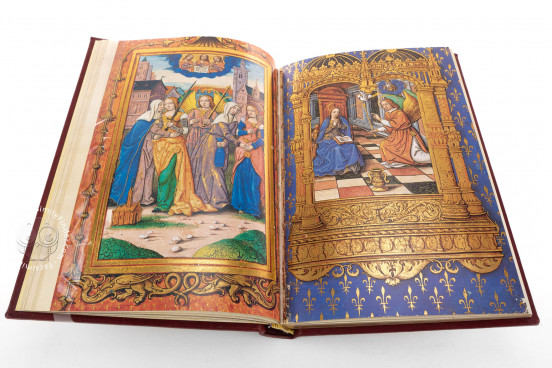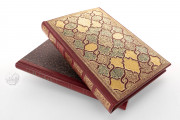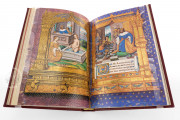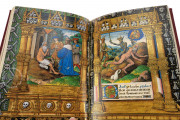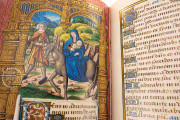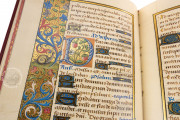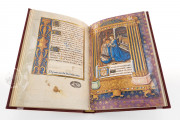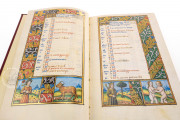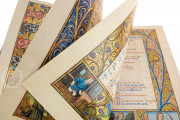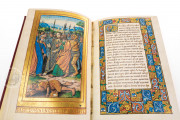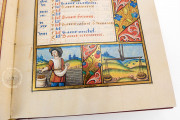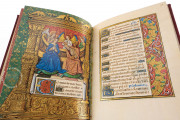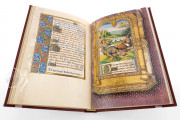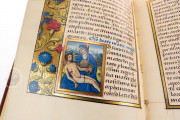Of consummate artistic quality, the Barberini Hours, a Christian devotional book, was made in Paris around 1510. A certain Brother Jean le Couvreur, whose name is inscribed on the last page, may have been an early–but probably not the original–owner. The manuscript boasts seventeen large miniatures with gorgeous painted architectural frames and/or sumptuously painted borders. The calendar pages have beautiful inhabited borders with bas-de-page miniatures of naturalistic zodiacal signs and labors of the months, and every text page features painted border decoration.
The Barberini Hours is a colorful and multifaceted example of private devotional book decorated in a style between late Gothic and Northern Renaissance. This illuminated codex comprises a book of hours following Roman liturgical use, accompanied by a calendar for Rouen inscribed in French.
Style and Influences of the Illuminations
The illuminators demonstrate remarkable artistic versatility by seamlessly integrating established French artistic conventions with innovative Italian pictorial elements. Additionally, Flemish artistic influences are prominently manifested, particularly evident in the manuscript's borders. These marginal decorations exhibit such vibrant coloration and botanically precise floral representations that they create a striking trompe l'oeil effect, appearing almost tangible to the viewer.
The border decorations display remarkable stylistic diversity, encompassing late Gothic characteristics—including geometric patterns adorned with crosses, hearts, and fleur-de-lis motifs—alongside Renaissance elements such as architectural components, ornamental fountains, and portrait medallions.
Calligraphic and Decorative Elements
The manuscript features exceptionally crafted initials enhanced with gold leaf and defined by precise black outlines against intensely pigmented blue backgrounds, demarcating the commencement of psalms, scriptural readings, and devotional prayers. The blue rubrics complemented by sepia-toned text significantly contribute to the manuscript's aesthetic refinement, further enhanced by numerous line-fillers executed in blue, brown, and burnished gold. Certain decorated initials are notably substantial in scale, incorporating elaborate floral and acanthus leaf ornamentation.
Provenance
Historical evidence suggests that this Book of Hours was incorporated into the Barberini family collection during the pontificate of Pope Urban VIII (born Maffeo Barberini, reigned 1623-1644). Subsequently, when the Barberini library was integrated into the Vatican Library's holdings, this magnificent devotional manuscript was transferred to this preeminent ecclesiastical repository.
We have 1 facsimile edition of the manuscript "Barberini Hours for Rouen": Barberini-Stundenbuch für Rouen facsimile edition, published by Belser Verlag, 1994
Request Info / Price
